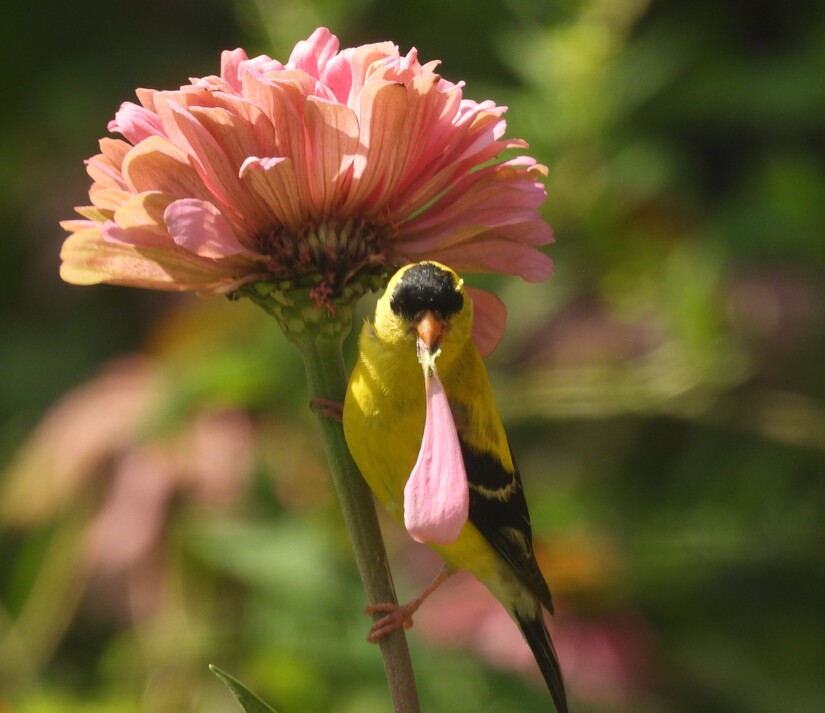Image

by Mike Strzelecki*
The iridescent gold American Goldfinches are the prettiest birds that regularly come to backyard feeders in the Boyertown area (although northern cardinals may beg to differ). Male Goldfinches are striking yellow with a black cap, and black wings with a white wing bar. They possess an unusually robust orange beak for busting open seeds. Females have a similar appearance but are a duller yellow.

Identifying Goldfinches by sight in your yard is fairly easy, as they are typically the only brilliant yellow bird that will hang out. They can sometimes be confused with the various yellow-hued warblers that may show up in spring, but the warblers quickly pass through whereas the goldfinches will often stay long-term. Goldfinches are often seen as a pair, especially in breeding season. Goldfinches are also often identified by their erratic flight pattern, where they repeatedly dip down and yo-yo back up while in transit.
Goldfinches are among the strictest vegetarians of the ornithology world. They feast primarily on plant seeds, favoring thistle and various other weeds. They pleasantly dismantle my backyard coneflower plants at season’s end and spend long periods of time hanging upside down on dried sunflower plants picking at the seeds. They love tree sap and will only ingest bugs in late summer, if necessary.
In Pennsylvania, most Goldfinches remain year-round, but some will undertake a short migration to avoid cold weather. Some will also move around within a region to chase better food supplies. I have seen 50 or more Goldfinches feeding at once in a roadside field when the thistle plants there were in full bloom.
You may notice more male Goldfinches in your yard than females. This is because there are three male goldfinches in the wild to every two female Goldfinches. The reason for this is that the male goldfinches have a longer lifespan than their female counterparts. I was unable to ascertain the reason for this phenomenon. .
Goldfinches nest in late spring or early summer, unlike many migratory birds that nest in early spring. This is primarily because of the Goldfinches' molting schedule, the process by which birds shed old feathers and grow new ones. Goldfinches molt in late winter or early spring and the molting process requires an unusual amount of calories and nutrients to perform. Because of this energy drain, Goldfinches do not have the vitality to breed in early spring. This molt will result in the brilliant yellow breeding feathers that Goldfinches are noted for. They will molt again in late summer returning to their more subdued appearance.

Female Goldfinches are dominant over males in spring and summer (probably due to nesting and breeding) and subservient to males in winter (when food-gathering becomes more difficult). Goldfinch nests are so tightly woven that they hold water. The female will secure the nest to tree branches using spider webs, and spread bird seed across the floor to have an instant food supply for the hatchlings..
Attracting Goldfinches to your backyard may mean simply planting flowers that they feed on, like coneflowers (also called echinacea), asters, zinnias, poppies, or marigolds. They crave sunflower seeds. As an alternative, you could hang a thistle feeder, but do so near a tree or shrub so that the Goldfinches are less susceptible to predators and have a safe sanctuary to escape to.
* Mike Strzelecki is a freelance travel and outdoor writer, and 1981 graduate of Boyertown Area Senior High School. He writes from his house in Baltimore, Maryland. In his spare time, he joins his wife on adventures around the country observing and photographing birds.
Photos by Mike Strzelecki.